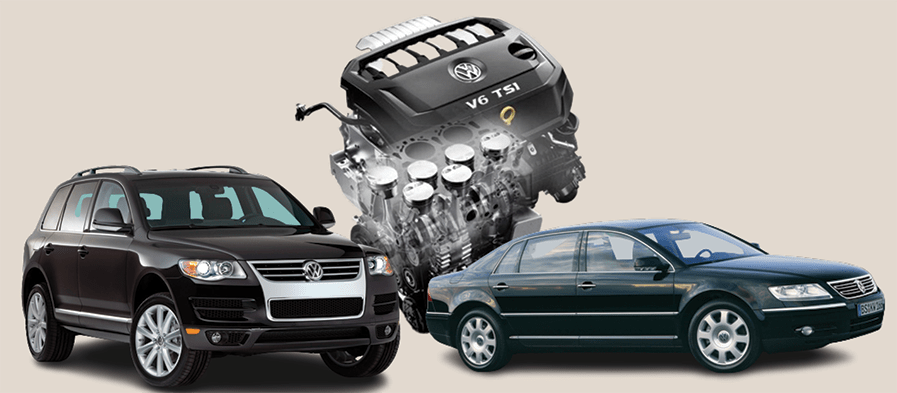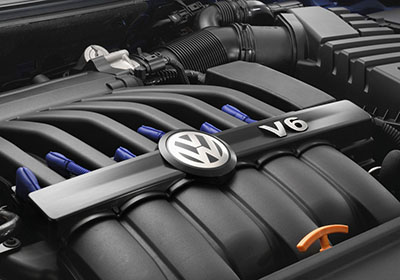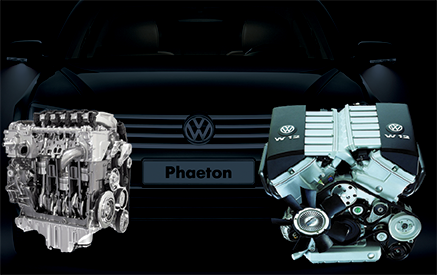Putting the VW VR6 Engine Reliability to the Test: Performance and Durability

The VW VR6 engine reliability is a massive discussion in online forums as enthusiasts seek an exciting driving experience from this Volkswagen rig.
The VR6 engine was inspired by Volkswagen’s love for compact designs. Unlike straight 8 engines, it didn’t need a long hood. They made the cylinders into a V shape and arranged them carefully, creating a compact and powerful engine.
Since 1978, VW has been experimenting with the VR6 design.
The VR engine was a breakthrough in layout and design. They put the cylinders in a straight line but staggered them cleverly.
This engine is used in various VW cars like Golf, Jetta, Passat, Phaeton, Touareg, and even the Porsche Cayenne.
The VR-6 engine is still used today and can adapt to different models.
VW VR6 Engine Reliability - features
Here are some details about the VW VR6 engine:
- The VR6 engine has a V6 cylinder configuration with one cylinder head.
- The size of the VR6 engine varies depending on the model, ranging from 2.8 to 3.6 liters.
- The power output ranges from 174 to 300+ horsepower, depending on the model.
- The VR6 engine provides good torque for better acceleration.
- It uses electronic fuel injection for precise fuel delivery.
- The engine has dual overhead camshafts (DOHC) with four valves per cylinder, which helps with airflow and combustion.
- Some models have variable valve timing technology (VVT) for improved power and fuel efficiency.
- The engine block is made of cast iron or aluminum, depending on the model.
- Some high-performance versions have an intercooler to boost efficiency and power.
Despite its innovative design, there have been some issues with the VR6 engine. Let’s explore these problems to understand their (VR6 engines) reliability better.
VW VR6 Engine Reliability - Problems
Understanding potential issues can help you diagnose and resolve potential troubles with your VR6 engine.
Engine Misfires
Engine misfires are a common issue that VW VR6 engine owners may encounter during the lifetime of their vehicles. When an engine misfires, it means that one or more cylinders fail to ignite the air-fuel mixture correctly.
This disruption in the combustion process can result in a range of problems, including reduced power, poor fuel efficiency, and increased emissions.
Causes of Engine Misfires
Spark plugs play a critical role in igniting the air-fuel mixture in the cylinders. Over time, spark plugs can wear out, leading to inconsistent sparks or no spark at all. As a result, misfires may occur.
The ignition coils are responsible for generating high-voltage sparks that ignite the fuel. A failing or damaged ignition coil can cause misfires in the corresponding cylinder.
Fuel injectors deliver fuel into the cylinders. If they become clogged or fail to spray the right amount of fuel, misfires can occur due to an improper air-fuel mixture.
Vacuum leaks can disrupt the engine’s air intake system, leading to an imbalanced air-fuel mixture. This imbalance can trigger misfires in the cylinders.
Insufficient compression in the cylinders can prevent the air-fuel mixture from igniting correctly. This may be caused by worn piston rings, cylinder head gasket leaks, or valve problems.
Oil Leaks
Oil leaks are a common problem that VW VR6 engine owners may encounter over time.
These leaks can be frustrating and, if left unattended, can lead to engine damage and costly repairs.
Understanding the causes, detecting the leaks early, and taking appropriate measures can help maintain the integrity of your engine and less stress
Causes of Oil Leaks
The most common cause of oil leaks in VW VR6 engines is deteriorated gaskets and seals. Over time, the heat and pressure within the engine can cause these components to degrade, leading to oil seepage.
The oil pan is located underneath the engine and holds the engine oil. If the oil pan gasket is damaged or the bolts securing it become loose, it can result in oil leaking from the pan.
The valve cover gasket seals the gap between the valve cover and the engine head. If this gasket becomes worn or damaged, oil can leak onto the engine and other components.
The front and rear main seals are critical in preventing oil from leaking out of the front and rear of the engine. Over time, these seals can wear out and allow oil to escape.
The oil filter housing contains the oil filter and may have a gasket that can degrade over time, leading to oil leaks.
Timing Chain Tensioner Failure
The timing chain tensioner is a crucial component in the VW VR6 engine, responsible for maintaining the correct tension in the timing chain.
A failing tensioner can lead to significant engine damage, making it essential to understand the causes, recognize the symptoms, and take prompt action to prevent further issues.
Causes of Timing Chain Tensioner Failure
Over time, the timing chain tensioner undergoes constant stress due to the engine’s operation. This wear and tear can lead to a loss of tensioning force, resulting in timing chain slack.
Regular maintenance is vital for identifying and addressing potential issues with the timing chain tensioner. Failure to perform timely inspections and replacements can increase the risk of failure.
The timing chain tensioner relies on proper oil pressure to function correctly. Low oil pressure or oil contamination can hinder its operation, leading to failure.
In some cases, a defective or poorly designed tensioner may be the root cause of failure. This can include issues with the materials used, manufacturing flaws, or design limitations.
Symptoms of Timing Chain Tensioner Failure
Recognizing the early signs of a failing tensioner can prevent more severe engine damage. Some common symptoms include:
A rattling or clattering noise coming from the engine, especially during startup or idle, can indicate timing chain slack caused by a failing tensioner.
A faulty timing chain tensioner may trigger the check engine light on the vehicle’s dashboard. Retrieving the trouble codes can provide valuable insights into the issue.
As the timing chain becomes slack, the engine’s timing may become out of sync, leading to reduced power and performance.
A failing tensioner can cause timing chain misalignment, leading to difficulties in starting the engine.
Timing chain issues can also result in misfires, as the engine’s timing becomes erratic.
Cooling System Issues
The cooling system in a VW VR6 engine plays a vital role in maintaining the engine’s temperature within a safe and optimal range.
Cooling system issues can lead to overheating, which can cause significant engine damage if not addressed promptly.
Understanding the causes, recognizing the symptoms, and implementing appropriate solutions can help prevent cooling system problems and ensure the longevity of the engine.
Causes of Cooling System Issues
The most common cause of cooling system problems is coolant leaks. Leaks can occur due to deteriorated hoses, worn gaskets, or even cracks in the radiator.
Failed thermostat. It regulates the flow of coolant through the engine. A malfunctioning thermostat can either get stuck in the closed position, causing overheating, or in the open position, leading to slow engine warm-up.
The water pump circulates coolant throughout the engine. A failing water pump can result in insufficient coolant flow, leading to overheating.
A clogged or damaged radiator can restrict coolant circulation, preventing proper heat dissipation.
Symptoms of Cooling System Issues
Recognizing the early signs of cooling system problems can prevent engine damage. Some common symptoms include:
The most apparent sign of cooling system issues is engine overheating. If the engine temperature gauge rises into the red zone or the “check engine” light comes on, it indicates potential cooling problems.
Frequent need to top up the coolant reservoir can suggest a coolant leak within the cooling system.
Puddles or stains of coolant beneath the vehicle can indicate leaks.
The engine running hotter than usual or excessive steam coming from the engine bay may signal cooling system problems.
If the cooling fan fails to turn on when the engine reaches operating temperature, it can cause overheating.
Ignition Coil Problems
The ignition coils in a VW VR6 engine are responsible for converting the low voltage from the battery into high voltage necessary to create sparks in the spark plugs.
These sparks ignite the air-fuel mixture in the cylinders, enabling the engine to run smoothly. Ignition coil problems can lead to various engine issues, affecting performance and drivability.
Causes of Ignition Coil Problems
Ignition coils can deteriorate over time due to constant use and exposure to high temperatures.
The location of the ignition coils near the engine exposes them to heat and vibration, which can contribute to their failure.
Voltage spikes within the vehicle’s electrical system can cause stress on the ignition coils, leading to premature failure.
Problems with the wiring, connectors, or the ignition control module can affect the performance of the ignition coils.
Moisture or corrosion can affect the electrical connections of the ignition coils, hindering their performance.
Symptoms of Ignition Coil Problems
Recognizing the early signs of ignition coil problems can prevent further engine issues. Some common symptoms include:
A failing ignition coil can result in engine misfires, causing the engine to run rough or hesitate during acceleration.
Rough Idle: If the ignition coil is not delivering enough voltage to the spark plugs, the engine may experience a rough or shaky idle.
Ignition coil problems can lead to a lack of power during acceleration and reduced overall engine performance.
A faulty ignition coil can make it difficult to start the engine, especially when the vehicle is cold.
A malfunctioning ignition coil may trigger the check engine light on the vehicle’s dashboard.
Camshaft Position Sensor Malfunction
The camshaft position sensor is a vital component in the VW VR6 engine’s electronic control system. It monitors the position of the camshaft, providing critical data to the engine control unit (ECU) for proper ignition timing and fuel injection.
A malfunctioning camshaft position sensor can lead to engine performance issues and drivability problems.
Understanding the causes, recognizing the symptoms, and implementing appropriate solutions can help address camshaft position sensor problems effectively.
Causes
The camshaft position sensor can wear out over time due to constant use and exposure to engine heat.
Problems with the sensor’s wiring, connectors, or the ECU can affect the sensor’s performance.
Magnetic interference from nearby components can disrupt the sensor’s ability to accurately detect the camshaft’s position.
The camshaft position sensor’s exposed location makes it susceptible to contamination from engine oil, dirt, and debris, affecting its function.
Improper installation of the sensor can lead to misalignment or inadequate connection, causing malfunctions.
Symptoms
- Recognizing the early signs of a faulty camshaft position sensor can prevent further engine issues. Some common symptoms include:
- A malfunctioning camshaft position sensor may trigger the check engine light on the vehicle’s dashboard.
- A faulty sensor can cause rough idling, leading to engine vibrations and instability at idle.
- The engine may have trouble starting or take longer to start due to improper ignition timing.
- A malfunctioning camshaft position sensor can cause hesitation or stumbling during acceleration.
- The engine may experience a lack of power and decreased overall performance.
Vacuum Leaks
Vacuum leaks are a common issue that can affect the performance and drivability of a VW VR6 engine.
The engine’s vacuum system plays a crucial role in controlling various components and functions, such as the fuel mixture, emissions, and power brakes. When there is a leak in the vacuum system, it can lead to an imbalance in the air-fuel mixture, resulting in rough idling, reduced power, and other drivability problems.
Understanding the causes, recognizing the symptoms, and implementing appropriate solutions can help address vacuum leaks effectively.
Causes of Vacuum Leaks
The vacuum system in the engine relies on a network of hoses to transport air and vacuum pressure. Over time, these hoses can deteriorate, crack, or become loose, leading to leaks.
The intake manifold gasket seals the gap between the intake manifold and the engine block. A faulty gasket can cause vacuum leaks.
The throttle body is an essential component in controlling the airflow to the engine. If the gasket between the throttle body and the intake manifold is damaged, vacuum leaks can occur.
The Positive Crankcase Ventilation (PCV) valve helps regulate crankcase pressure. If the PCV valve is stuck open or closed, it can cause vacuum leaks.
The brake booster assists in applying the brakes. If the vacuum hose connected to the brake booster has a leak, it can affect brake performance.
Symptoms of Vacuum Leaks
Recognizing the signs of vacuum leaks can help diagnose the issue promptly.
Some common symptoms include:
- Vacuum leaks can cause the engine to idle roughly or stall when at a stop.
- During acceleration, the engine may hesitate or stumble due to an improper air-fuel mixture.
- A vacuum leak can trigger the check engine light on the vehicle’s dashboard.
- The engine may experience a lack of power and decreased overall performance.
- A vacuum leak can cause the engine to idle at a higher-than-normal speed.
Throttle Body Issues
The throttle body is a critical component in the VW VR6 engine’s air intake system, controlling the amount of air that enters the engine.
It plays a vital role in regulating engine performance and efficiency.
Causes of Throttle Body Issues
Over time, carbon deposits can accumulate on the throttle body’s butterfly valve and bore, affecting its movement and proper function.
Some modern VW VR6 engines have electronic throttle bodies with an integrated motor. If this motor fails, it can lead to throttle control problems.
The throttle position sensor (TPS) provides feedback to the engine control unit (ECU) about the throttle’s position. A faulty TPS can cause erratic throttle response.
Like any mechanical component, the throttle body can experience wear and tear over time, affecting its smooth operation.
The throttle body can be exposed to dust, dirt, and oil, leading to contamination that hinders its function.
Symptoms of Throttle Body Issues
Recognizing the early signs of throttle body problems can prevent further engine issues.
Some common symptoms include:
- A faulty throttle body can lead to sluggish or delayed acceleration when pressing the gas pedal.
- The engine’s idle speed fluctuates or becomes unstable.
- The engine may stall when coming to a stop or during low-speed maneuvers.
- Check engine light on the vehicle’s dashboard.
- A malfunctioning throttle body can lead to increased fuel consumption and reduced overall fuel efficiency.
VW VR6 Engine Reliability - Tuning

Now, let’s talk about VW VR6 engine tuning. It’s all about making this already cool engine even better! With some adjustments and modifications, we can get more power and performance out of it.
Performance Chip Tuning
One way to make the VW VR6 engine better is by using performance chips. These chips can change the engine’s settings to make it work better and deliver more power. Skilled professionals or special software can do this.
Air Intake Upgrades
To get more power, we can improve how the engine breathes. Upgrading the air intake system allows better airflow, and that means more power. Things like high-flow air filters or cold air intakes can really make a difference.
Exhaust System Enhancements
A better exhaust system can let the engine’s exhaust gases flow out more efficiently. This can be done with special headers, catalytic converters, and mufflers. It not only boosts performance but also adds a cool sound to the engine.
Turbocharging or Supercharging
If you want a lot more power, you can add a turbocharger or supercharger to the engine. These things can really boost horsepower and torque. But be careful, it needs proper planning to make sure it works well.
Upgraded Camshafts
Another way to make the engine perform better is by using performance camshafts. These parts control how the valves open and close, which helps with engine performance. But it’s important to find the right balance between performance and drivability.
Performance Headers
Using high-performance headers can also improve the engine’s power. They help the exhaust gases flow better and can even cool down the engine.
Ignition System Upgrade
Upgrading the ignition system with better spark plugs and ignition coils can help the engine burn fuel more efficiently. That means better performance!
Also related articles ..

EA888 Engine Reliability
Get all the details you need on the EA888 Engine Reliability Volkswagen TSI engine
Plus more articles


